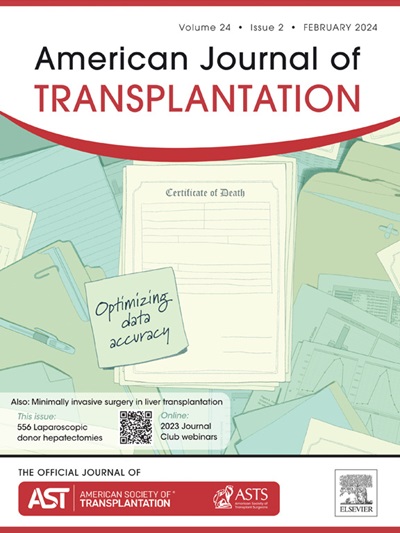Partial bladder transplantation with en bloc kidney transplant—long-term, 17 years, the outcome of a “bladder patch technique”
IF 8.9
2区 医学
Q1 SURGERY
引用次数: 0
Abstract
A transplant of a portion of the bladder with an en bloc kidney from a 2-year-old donor was previously reported in a 12-month-old girl due to her extremely small bladder. Bilateral kidneys were transplanted en bloc with their ureters connected to a patch of the donor bladder (bladder patch technique). The long-term outcomes and complications of this technique have not been documented. Here, we report a long-term, 17-year follow-up of this patient with an evaluation of whole bladder functions at 18 years of age. The patient has had no episodes of urinary tract infections. Cystoscopy showed a viable transplanted bladder with a well-perfused mucosa. We observed that the native bladder has stretched over time, forming more than half of the bladder wall. Urodynamic studies showed preserved bladder compliance at 43 mL/cmH2O, and native bladder contractility was preserved. Prolonged voiding time and postvoid residual urine were also observed. These findings were suggestive of detrusor underactivity. No reflux across the donor ureterovesical junctions was observed. The recipient was instructed to continue timed voiding and double voiding to empty the bladder. In conclusion, en bloc kidney transplantation with a bladder patch is a feasible and safe option for kidney transplant recipients with a small bladder capacity.
膀胱部分移植与整体肾移植--"膀胱补片技术 "17 年的长期疗效。
此前曾有报道称,一名 12 个月大的女孩因膀胱极小而接受了来自 2 岁捐献者的部分膀胱和整体肾脏移植手术。双侧肾脏进行了整体移植,其输尿管与供体膀胱的补片相连(膀胱补片技术)。该技术的长期疗效和并发症尚未见报道。在此,我们报告了对该患者 17 年的长期随访情况,并在其 18 岁时对其整个膀胱功能进行了评估。患者没有发生过尿路感染。膀胱镜检查显示移植膀胱存活,粘膜灌注良好。我们观察到原生膀胱随着时间的推移已经拉长,形成了一半以上的膀胱壁。尿动力学检查显示,膀胱顺应性保持在 43 mL/cmH2O,原生膀胱的收缩力也得以保留。还观察到排尿时间延长和排尿后残余尿。这些结果提示患者存在逼尿肌活动不足。在供体输尿管连接处没有观察到返流。医生嘱咐受者继续定时排尿和双排尿以排空膀胱。总之,对于膀胱容量较小的肾移植受者来说,带膀胱补片的整体肾移植是一种可行且安全的选择。
本文章由计算机程序翻译,如有差异,请以英文原文为准。
求助全文
约1分钟内获得全文
求助全文
来源期刊
CiteScore
18.70
自引率
4.50%
发文量
346
审稿时长
26 days
期刊介绍:
The American Journal of Transplantation is a leading journal in the field of transplantation. It serves as a forum for debate and reassessment, an agent of change, and a major platform for promoting understanding, improving results, and advancing science. Published monthly, it provides an essential resource for researchers and clinicians worldwide.
The journal publishes original articles, case reports, invited reviews, letters to the editor, critical reviews, news features, consensus documents, and guidelines over 12 issues a year. It covers all major subject areas in transplantation, including thoracic (heart, lung), abdominal (kidney, liver, pancreas, islets), tissue and stem cell transplantation, organ and tissue donation and preservation, tissue injury, repair, inflammation, and aging, histocompatibility, drugs and pharmacology, graft survival, and prevention of graft dysfunction and failure. It also explores ethical and social issues in the field.

 求助内容:
求助内容: 应助结果提醒方式:
应助结果提醒方式:


